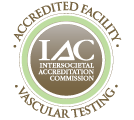UNDERSTANDING PROBLEM LEG VEINS
Problem leg veins can significantly disrupt your quality of life. Whether you are suffering from tired or achy legs, or you have become self-conscious because of how your veins make your legs appear, there are treatment options available. From self-care to surgery, these treatments can help alleviate your symptoms and of course, make you feel better about your appearance.
How Do Leg Veins Work?
Veins and arteries in your body are responsible for taking blood throughout your body. Veins take blood to your limbs and organs, while arteries bring oxygenated blood to the heart and rest of the body. Blood then goes back into the veins and the process starts again. Vein problems and artery problems are separate and must be treated like that.
Your veins are a vast network that manages the blood flow throughout the entire body. You have small veins that sit just below the skin’s surface and drain into the body’s reticular system. Blood then flows to the larger veins that are deeper, below the skin. The larger veins are responsible for taking blood straight to the heart, while the large and small saphenous veins are what operate in the legs.
How Blood is Returned to the Heart
Blood must flow upward throughout your body to make it back to the heart – working against gravity. Your calf and leg muscles help push that blood upward, while valves (small flaps located inside the vein), open up and allow blood to pass through. Valves close as blood passes through to keep it from flowing back down.
What Happens When You Develop Vein Problems?
Vein problems usually occur due to venous insufficiency. This means that your veins are not adequately carrying the blood back up to the heart and your valves are not closing as they should – which allows the blood to flow back down and to the legs.
Common Issues About Problem Leg Veins
There is a lot to understand about problematic leg veins, so to determine which treatment is best, you must first identify the type of problem you have.
Iliofemoral Venous Overflow Obstruction
Iliofemoral venous overflow obstruction occurs when the vein becomes blocked or narrowed and prevents blood from circulating back to the heart. This type of problem vein often occurs in the lower abdomen. You may find that your legs are painful, swollen or throbbing throughout the day if you have this condition. Skin discoloration is also common in individuals with Iliofemoral venous overflow obstruction. DVT also known as Deep Vein Thrombosis (which is a blood clot in the leg), is common too in individuals with iliofemoral venous overflow obstruction.
Spider and Varicose Veins
Your legs are full of tiny blood vessels that sit just below the surface of the skin. As they become damaged, they can create a web-like appearance that is blue, purple or red. In some cases, clusters of spider veins can look like bruises. While it is rare your spider veins would turn into a serious condition, they are visible and can make you feel self-conscious about your legs.
Varicose veins occur when blood flows in the wrong direction, causing the blood to pool and the vein to swell. This is typically found in the legs and if you have varicose veins you may suffer from fatigue, aching of the leg, itching, etc. The veins will twist, bulge and are visible on the outside of the leg.
Males and females are both prone to spider and varicose veins. But, certain risk factors may make one person more prone to them than another, including:
• Family history of problematic veins
• Hormonal changes (such as pregnancy)
• Standing or sitting for prolonged periods of time
• Injury to the leg or vein
• Lack of physical activity
Treating Problem Veins
A vascular expert must assess your problem veins to determine the right course of treatment. Some options are sclerotherapy or endovenous ablation. There are new technologies and treatments constantly being researched and brought into practice. Your vein expert can educate you on the best options.
Self-care can also be performed to help alleviate symptoms and possibly prevent further problem veins from developing.
After Treatment
Treatment for problem veins not only make you feel better; they make you look better too. To ensure the veins do not come back, you must keep up with your follow-up appointments. Also, follow any varicose vein self-care instructions provided to you.



